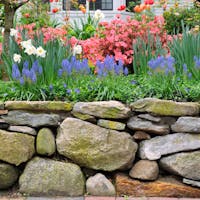Retaining Wall Quotes & Cost Guide 2025
- Post a job for retaining walls
- Receive multiple quotes from local retaining wall builders
- Choose your preferred contractor and deal direct!
Where do you need Retaining Walls?
Describe your job and our suppliers will send you quotes
Types of Retaining Wall Contractors

Retaining Wall Contractors - All

Block Retaining Wall Contractors

Rock Retaining Wall Contractors

Gabion Retaining Wall Contractors
713 Retaining Wall Builders on iseekplant
iseekplant is Australia's largest and most visited online marketplace for construction gear and services: and we have literally hundreds of top-quality retaining wall builders listed on our marketplace. With over 713 professional builders listed, and more joining every week, finding the right contractor for your project is just a click away. Whether you're looking to fortify a hillside garden or create usable space in a sloped area on a commercial jobsite, our platform makes the search easy and efficient.
This quick guide breaks down retaining wall rates, cost estimates, types of retaining walls, common materials and their pros and cons to help you choose the perfect option for your project.
Retaining Walls Cost Guide 2025
iseekplant does its best to keep abreast of retaining wall pricing across Australia, but there are a huge number of factors influencing costs, and the costs of this type of construction have changed dramatically over time. Things that have impacted these costs have been labour shortages, cost of concrete increasing, high demand in the residential sector and a general increase in the cost of construction materials as a result of inflation.
Whilst we have a pretty good read on rates due to the large number of jobs posted on our system, we encourage our users to get accurate quotes for their jobs and not rely on the information below. You can do this by using iseekplant's get a quote tool.
All prices below include GST.
| Retaining Wall Type | Cost per SQM | Notes |
|---|---|---|
| Block Retaining Wall | $250 – $450 | Interlocking concrete blocks; price varies with design/style complexity. |
| Rock Retaining Wall | $200 – $350 | Natural rock; higher costs if premium stone is used or labour-intensive stacking. |
| Gabion Retaining Wall | $300 – $500 | Includes cages and filling; labour varies based on size and site conditions. |
| Boulder Retaining Wall | $150 – $300 | Cost-effective if local boulders are available; large equipment often needed. |
| Concrete Sleeper Wall | $200 – $400 | Common and durable; price includes posts, sleepers, and drainage gravel. |
Note: Rates are approximate averages and may vary based on location, specific requirements and market demand. All prices listed are estimates, exclude GST and are in AUD.
Retaining Wall Cost Estimates by City 2025
Demand for retaining wall builders changes dramatically depending on where you are located, and whether the local contractors have a lot of work on. This has been the primary issue in cost increases in recent years, because of the building boom during COVID. If you are building a retaining wall in a town with low demand, then you can expect competitive prices and broad availability - this is certainly true of Victoria and South Australia at the moment. But if you are working in a town with still lots of construction happening, then contractors are busier and will likely price less competitively. Here are some broad brush strokes on per sqm rates by city:
| City | Cost per Square Metre (AUD) |
|---|---|
| Sydney | $250 - $500 |
| Melbourne | $220 - $480 |
| Brisbane | $230 - $490 |
| Perth | $210 - $470 |
| Adelaide | $200 - $450 |
| Canberra | $240 - $490 |
| Hobart | $210 - $460 |
| Darwin | $230 - $500 |
The above estimates include labour and materials but exclude additional costs such as excavation, drainage or council permits. There are big differences in cost that are due to material choices, design complexity, labour costs and other regional factors.
Additional Contractor Costs
Don't get caught out by these additional costs that will commonly appear in quotes provided by contractors through iseekplant:
| Cost Type | Estimated Cost (AUD) | Additional Information |
|---|---|---|
| Design and Planning | $100 - $500 | Based on complexity |
| Soil Testing | $300 - $1,000 | Essential for larger projects |
| Excavation and Site Prep | $50 - $150 per hour | Depends on accessibility |
| Drainage Installation | $30 - $90 per m^2 | Prevents water damage |
| Permits and Licenses | $50 - $500 | Varies by local regulations |
For an accurate quote tailored to your requirements, use our Get a Quote tool, and we’ll connect you with local contractors.
Types of Retaining Walls
Retaining walls are essential structures that hold back soil and prevent erosion, offering both functional support and aesthetic appeal to various landscapes. On the iseekplant platform, we categorise these walls based on their construction methods and materials.
Below, let's look at the diverse types of retaining walls available to best suit your project needs.
- Block Retaining Wall: Block retaining walls are modular systems offering a modern design with each block interlocking into the next.
- Rock Retaining Wall: Rock retaining walls are large rocks stacked together, combining strength and a natural aesthetic.
- Gabion Retaining Wall: Gabion retaining walls are built like cages or boxes filled with rocks or concrete, offering both strength and flexibility.
- Boulder Retaining Wall: Boulder retaining walls utilise larger boulders stacked together, perfect for holding back significant soil amounts.
- Concrete Sleeper Wall: Made of upright concrete posts and horizontal sleepers, concrete sleeper walls are popular for their durability in various applications.
- Gravity Wall: Rely on their weight to hold back the soil.
- Anchored Wall: Use anchors placed in the soil behind the wall for added strength.
- Cantilevered Wall: Built with a stem or thin vertical wall attached to a base slab.
- Sheet Piling Wall: Sheet piling are thin walls of steel, wood or vinyl driven into the ground, ideal for tight spaces.
- Reinforced Wall: Combine reinforcing bars with concrete for added durability.
Applications of Different Retaining Wall Types
Here's a table to help you decide what type of retaining wall you need, based on your unique jobsite application:
| Type of Retaining Wall | Best Applications |
|---|---|
| Block Retaining Wall | Residential landscaping; Terraced gardens; Any setting where aesthetics and functionality are crucial |
| Rock Retaining Wall | Garden landscapes; Any application that requires a seamless blend to natural surroundings |
| Gabion Retaining Wall | Erosion control in river banks; Landscaping; Noise barriers on highways |
| Boulder Retaining Wall | Larger landscapes such as parks and commercial areas; Ideal for soil retention |
| Concrete Sleeper Wall | Residential backyards; Large commercial areas |
| Gravity Wall | Landscaping in residential areas; Small garden beds; Low height requirements |
| Cantilevered Wall | Roadsides and highways; Commercial properties with significant height differences; Urban infrastructures |
| Sheet Piling Wall | Waterfront properties; Coastal embankments; Areas with limited space for wall construction |
| Anchored Wall | Steep slopes or cliffs; Areas with soft soils; When additional strength is needed without increasing wall thickness |
| Reinforced Soil or MSE | Highways; Large commercial properties; Urban areas with high traffic loads |
Pros and Cons of Different Retaining Wall Types
Every retaining wall type has its advantages and potential drawbacks, depending on a project's specific requirements. As you compare the options available, understanding these pros and cons can help guide your decision:
| Type of Retaining Wall | Pros | Cons |
|---|---|---|
| Block Retaining Wall | Modular design allows for flexibility in construction; Aesthetically pleasing and can be customised with various finishes; Durable and requires minimal maintenance | Installation requires precision to ensure stability; Drainage is essential to prevent pressure build-up; Might need reinforcement for taller walls |
| Rock Retaining Wall | Natural look integrates well with the landscape; Excellent drainage properties; Long lifespan with little maintenance | Construction can be time-consuming; Requires skilled labour for proper construction; Potential for weed growth between rocks |
| Gabion Retaining Wall | Highly permeable, preventing water buildup; Can be filled with recycled materials; Flexible structure that can tolerate ground movement | Wire cages can corrode over time; May not be as visually appealing to some; Filling process can be labour-intensive |
| Boulder Retaining Wall | Provides a natural and rugged appearance; Boulders lock together, providing strength; Excellent for creating terraced gardens | Boulders can be heavy and challenging to position; Limited in height without reinforcement; Proper construction is vital to prevent shifting over time |
| Concrete Sleeper Wall | Extremely durable and long-lasting; Resistant to pests and rot; Can be textured or coloured for aesthetic appeal | Heavier than other options and may require machinery for installation; Can be more expensive than other materials; Requires proper drainage to prevent hydrostatic pressure |
| Gravity Wall | Simple design and construction; Cost-effective for shorter walls; Flexible in terms of materials used | Limited to short height; Can be unstable if not properly constructed; Needs a large base for stability |
| Cantilevered Wall | Uses less material than gravity walls; Can achieve greater heights; Effective for deep excavations | Requires careful engineering and construction; Not as aesthetically pleasing; Drainage is crucial to prevent pressure build-up |
| Sheet Piling Wall | Perfect for tight spaces; Rapid installation; Can be used in waterlogged conditions | Limited to softer soils; Might corrode over time; Limited in terms of aesthetics |
| Anchored Wall | Provides additional strength for thin walls; Flexible design options; Suitable for a variety of soil types | Complex construction; Requires regular maintenance; Anchoring system must be precise |
| Reinforced Soil or MSE | Can handle significant loads; Flexible and can adapt to ground movements; Drainage-friendly design | Requires specific and quality materials; Proper installation is crucial; Not suited for all types of soil |
Materials Used in Retaining Wall Building
Retaining walls are as varied in material as they are in design, each offering unique aesthetic and functional qualities. The choice of material plays a crucial role in the wall's durability, cost and the overall look of the finished structure.
In this section, we'll explore different materials commonly used in retaining wall construction, helping you make an informed choice for your project.
- Timber: Natural look, ideal for gardens or low walls.
- Stone: Durable and visually appealing, often used in decorative walls.
- Concrete: Offers strength and longevity, common in commercial projects.
- Brick: Classic appearance, requires a solid foundation.
- Steel Sheets: Used in sheet piling, resistant to corrosion.
Pros and Cons of the Common Materials Used in Retaining Walls
Every building material has its strengths and weaknesses, and retaining walls are no exception. Let's look at the pros and cons of these common materials:
| Material | Pros | Cons |
|---|---|---|
| Timber | Aesthetically pleasing and natural look; Relatively low cost; Easy to install | Limited lifespan due to potential rot and decay; Can be susceptible to pests; Not for high walls |
| Stone | Durable and long-lasting; Natural appearance; Good drainage properties | Higher cost compared to some materials; Requires skilled installation; Heavy |
| Concrete | Extremely durable and strong; Suitable for tall walls; Versatile aesthetic options | Can be more expensive; May appear too industrial for some preferences; Installation can be complex |
| Brick | Classic appearance; Durable and strong; Resistant to fire | Mortar joints can deteriorate over time; Limited design flexibility; Installation can be tedious |
| Steel Sheets | Ideal for tight spaces and temporary solutions; Relatively lightweight; Quick installation | Prone to rust if not treated; May not be as aesthetically pleasing; Limited in design options |
In selecting the right material for your retaining wall, it's crucial to strike a balance between aesthetics, functionality, longevity and budget. Each material presents unique benefits and challenges, so consider your project's specific needs and environmental conditions.
With informed choices, you can ensure the longevity and stability of your retaining wall, complementing the landscape for years to come.
Ready to meet your retaining wall contractor?
iseekplant connects you with the best retaining wall builders in Australia. We do this by matching your unique job to contractors that are nearby, that we know have the capability to deliver - on-time and on-budget. Our platform is designed to connect construction professionals with the services and gear they need within the closest proximity to their job.
If you're set to begin, click 'Get a Quote' now. If you would prefer to talk on the phone, feel free to call our suppliers using the phone number on our directory.
For assistance or queries, reach out at projects@iseekplant.com.au or call 1300 691 912.
Popular Retaining Walls Locations
Related Categories
Become a supplier
Recent Retaining Walls reviews
"Excellent response time, quote was fair, Issac: friendly customer service, nothing was an issue during the quotation process. All three parties involv..."
- Russell WhittardView profile"My husband I recently had a retaining wall built and I couldnt be more thrilled with the results. The team was professional, efficient, and clearly to..."
- Lindsay & Sharon SmithView profile"We contacted Lachie for a quote to do the earthworks for filling in our swimming pool. Lachie promptly arranged a time to come and see us (that same a..."
- Karen LeaskView profileHow It Works
FAQs for Retaining Walls Builders & Contractors
Here are some frequently asked questions about retaining walls and tips on how to find the right contractor for your job.
What do we have to offer?
Want to Know More?
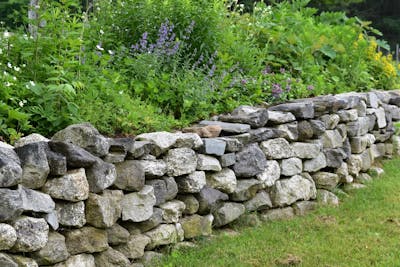
Retaining Wall Planting Ideas | Find suppliers on iseekplant
Whether you've just built a brand new home, have existing retaining wall...
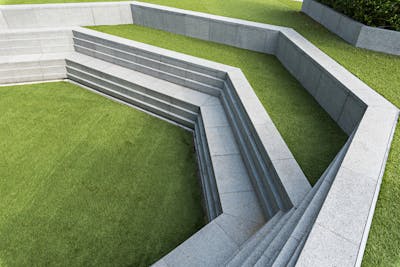
Concrete Retaining Wall Cost Guide 2022- Get a quote | iseekplant
Retaining walls serve purposes of both practicality and aesthetics. You ...
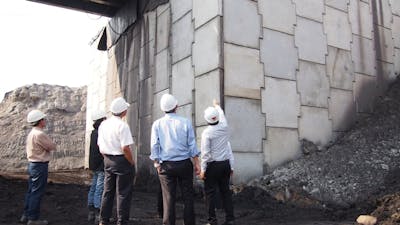
Types of retaining walls- Find a contractor
Retaining walls are built to retain soil, land or structures. They retai...
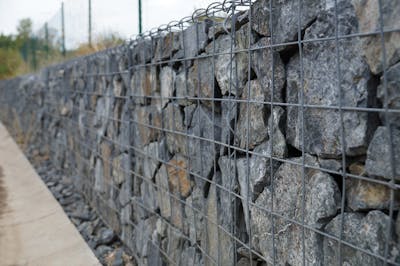
2022 Retaining Wall Cost Guide- Find a contractor | iseekplant
Is your property on a downward slope? Are you trying to keep soil from f...

What is a retaining wall?
Retaining walls are used to retain soil, land or structures. Retaining w...




